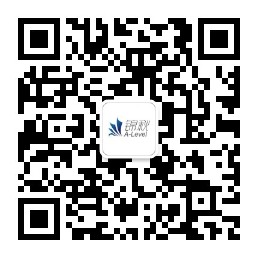
A Level课程学习分为很多科目,中国学生一般偏向于选择理科类科目,其中,A Level物理是常见选择科目之一,接下来,锦秋小编将为大家带来的是AS阶段,A Level物理的25个实验,这也是物理大纲要求掌握的内容,所以,大家要认真阅读,记录下来哦!
Unit 1
Mechanics
1.Determine speed and acceleration, forexample use light gates
Demonstrate anunderstanding of how ICT can be used to collect data for, and display,displacement/time and velocity/time graphs for uniformly accelerated motion andcompare this with traditional methods in terms of reliability and validity ofdata.
2.Strobe photography or video camera toanalyses motion.
Investigate, usingprimary data, recognize and make use of the independence of vertical andhorizontal motion of a projectile moving freely under gravity.
3. Find the centre of gravity of an irregularrod
Draw and interpretfree-body force diagrams to represent forces on a particle or on an extendedbut rigid body, using the concept of centre of gravity of an extended body
4. Use an air track to investigate factorsaffecting acceleration
Investigate, by collectingprimary data, and use ΣF = ma in situations where m is constant (Newton’s firstlaw of motion (a = 0) and second law of motion)
5.Measure g using, for example, light gates.
Estimate, and thenmeasure, the weight of familiar objects
Use the expressionsfor gravitational field strength g = F/m and weight W = mg
6. Use, for example, light gates to investigatethe speed of a falling object
Investigate andapply the principle of conservation of energy including use of work done,gravitational potential energy and kinetic energy
Materials
7. Obtain force-extension graphs for, example,copper wire, nylon and rubber
Obtain and drawforce–extension, force– compression, and tensile/compressive stress-straingraphs. Identify the limit of proportionality, elastic limit and yield point
8. Investigations could include, for example,copper and rubber
Explain the meaningand use of, and calculate tensile/compressive stress, tensile/compressivestrain, strength, breaking stress, stiffness and Young Modulus. Obtain theYoung modulus for a material
Unit 2
Waves
9. Wave machine or computer simulation of waveproperties
Understand and usethe terms amplitude, frequency, period, speed and wavelength
10. Demonstration using a loudspeaker
Demonstration usingwaves on a long spring
A sound wave is alongitudinal wave which can be described in terms of the displacement ofmolecules
11. Demonstration with ripple tank
Explain and use theconcepts of wavefront, coherence, path difference, superposition and phase.
Investigate andrecall that waves can be diffracted and that substantial diffraction occurswhen the size of the gap or obstacle is similar to the wavelength of the wave.
Explain qualitatively how the movement of a source of sound or light relative to an observer/detectorgives rise to a shift in frequency (Doppler effect) and explore applicationsthat use this effect
12. Melde’s experiment, sonometer
Explain what ismeant by a standing (stationary) wave, investigate how such a wave is formed,and identify nodes and antinodes
13. Measure the refractive index of solids andliquids
Investigate andexplain how to measure refractive index
14. Demonstration using a laser
Recall that, ingeneral, waves are transmitted and reflected at an interface between media
15. Models of structures to investigate stressconcentrations
Investigate andexplain what is meant by plane polarised light
DC Electricity
16. Measure current and voltage in series andparallel circuits
Use ohmmeter tomeasure total resistance of series/parallel circuits
Recognise,investigate and use the relationships between current, voltage and resistance,for series and parallel circuits, and know that these relationships are aconsequence of the conservation of charge and energy.
17. Measure the efficiency of an electric motor
Investigate and usethe expressions P = VI, W = VIt. Recognise and use related expressions eg P =I2R and P = V2/R
18. Investigate I-V graphs for filament lamp, diodeand thermistor
Interpretcurrent-potential difference graphs, including non-ohmic materials
19. Measure resisitivity of a metal and polythene
Investigate and usethe relationship R = ρl/A
20. Use a digital voltmeter to investigate ‘output’of a potential divider
Investigate andexplain how the potential along a uniform current-carrying wire varies with thedistance along it and how this variation can be made use of in a potentialdivider
21. Measure the emf and internal resistance of acell eg a solar cell
Define and use theconcepts of emf and internal resistance and distinguish between emf andterminal potential difference
22. Use of ohmmeter and temperature sensor
Investigate andrecall that the resistance of metallic conductors increases with increasingtemperature and that the resistance of negative temperature coefficientthermistors decreases with increasing temperature
23. Demonstration of slow speed of ion movementduring current flow
Use I = nqvA toexplain the large range of resistivities of different materials
Nature of light
24. Demonstration of discharge of a zinc plate byultra violet light
Recall that theabsorption of a photon can result in the emission of a photoelectron
25. Demonstration using gas-filled tubes
Explain atomic linespectra in terms of transitions between discrete energy levels
锦秋A-Level项目针对不同学员的不同层次的学习需求,设置一站式计划、G5学霸计划和国际班互补计划三大课程体系,并且有针对性的制定课程计划和教学方式,开设的课程有数学、进阶数学、物理、化学、生物、经济学、会计学等,紧抓中国学生理科优势,进行课程组合化。
想要快速提升A-Level成绩,扫码关注我们吧!(微信号: xhdjinqiu)

| 大学名称 | QS排名 |
|---|